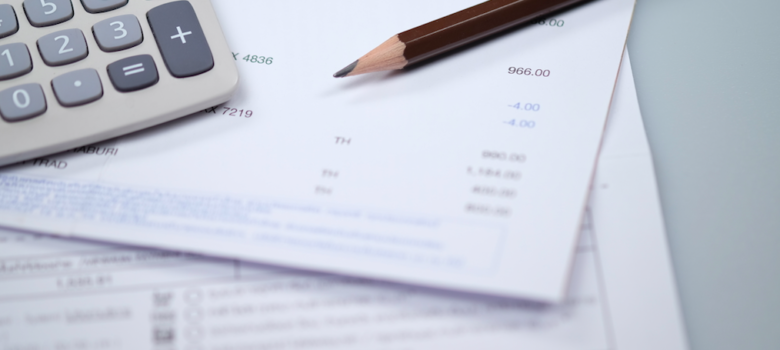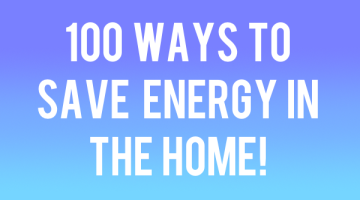
Over the last couple of years, the Government have made a real effort to simplify energy tariffs. We have looked at these before – both electricity and gas – but since these changes we thought we should revisit the subject. We can give you an idea of how much energy you are using in your home and also find a way to move to a cheaper tariff.
So the main change is that all energy tariffs have two parts to them now. Let’s take a look at each of them in turn:
The standing charge
The first is the standing charge – this is a daily payment that you make for the right to have electricity or gas. This can vary hugely between energy companies but you are looking at a cost of between 10p and 30p for each one. So over a 12-month period this could contribute significantly to the energy bill you end up paying.
For instance, I am signed up to First Utility for both electricity and gas. The standing charge on my tariff for electricity 18.61p and for gas it is 16.01p. That means that it costs me £68 per year for electricity (£0.1861 x 365 days) and £58 for gas. This part of the bill is completely independent of how much energy you use on a day to day basis.
The usage charge
The second part of your energy bill is all about usage. Your energy usage is measured in kilowatt hours, or kWh for short.
If you look closely at the instructions of any electrical device, it will normally have a power rating which tells you how much electricity it needs to work – this is normally given in watts (W) or kilowatts (kW) (1000W = 1kW).
Of course, the amount of electricity it uses depends on how long it’s on for, and this is measured in kilowatt-hours (kWh).
The example all the energy companies use to help people understand this is that 1kwh of electricity is equivalent to a 40w bulb being on for 25 hours.
In our opinion this is a really terrible analogy, since more and more people are moving to LED bulbs and don’t even have a 40w bulb in their home. The numbers don’t mean much anyway!
Our example numbers are calculated for a (very bright) 10w LED bulb – this could be on continuously for 4 days and you would use 1kWh.
So how much does 1kWh cost?
- For electricity you can expect to pay between 10 – 15p per kWh
- For gas you can expect to pay between 2.5 – 4p per kWh
This is why people tend to heat their homes with central heating systems if they have the option. Heating your home with gas is about 1/3 of the price of heating your home with electricity.
Going back to appliances – how much do they cost to run?
Remember that electricity costs between 10 – 15p per kWh, so if you know how many kWh an appliance uses you can simply multiply the two numbers.
Take for example a freezer – this may use might use 1-1.5kWh a day – so will cost you approximately 15p to run each day. A fridge will use less at just 1kWh so will only cost 10p a day.
Heating wise, a 2000w convector heater will use 1kWh in just 30 mins, so it will cost you 20p or more for every hour you have it on.
Tumble dryers are especially bad – sometimes as much as 3.5kWh per cycle. This is basically £0.50 per use, so if you have a washing line use it!

The actual kWh usage of all these appliances will vary based on their power rating, and the cost for using them will vary depending on your exact tariff charge.
Lets move back to the energy bill now then – what is an average energy bill?
Looking at the electricity bill first
According to DECC, the average yearly electricity usage for domestic properties in the UK is 3,800kWh.
So what would that cost per year? Well I am going to take my tariff details here – and I am with First Utility – and apply them to these figures. You can see all the tariff details in the table below:

For electricity, my standing charge is 18.610p per day and the unit rate (so the amount I pay per kWh) is 12.065p / kWh.
Therefore the standing charge would be £0.1861 x 365 = £67.92
The usage charge based on DECC’s figures would be 3,800 x £0.12065 = £458.47
So the total ectricity bill is £526.39 based on my tariff rates.
Repeating the process for the average gas bill
The average domestic yearly gas usage is 15,000kWh according to this same set of statistics released by DECC.
Looking at the table above, with my tariff rates I would pay 16.010p per day for my standing charge and the unit price is 2.747p / kWh.
Therefore the standing charge would be £0.1601 x 365 = £58.44
The usage charge would be 15,000 x £0.02747 = £412.05
So the total gas bill would be £470.49 based on my tariff rates.
The Economy 7 tariff
The only exception to the above is the Economy 7 tariff. This is when you pay two different rates for electricity and is normally used when people have storage heaters installed in their homes. Basically, the electricity you use at night costs less than the electricity you use during the day. The cheaper electricity is usually available either from 11.00pm to 6.00am, 12.00am to 7.00am or 1.00am to 8.00am.
>>> Learn more about the Economy 7 tariff <<<
The principles discussed are exactly the same – you still have a standing charge but you have two usage rates: the night rate and the day rate. You can apply the same techniques as before to calculate your bill.
Take these values with a pinch of salt!
It goes without saying that there is unbelievable variability within our housing stock in terms of size and heating system. Also there are people out there who like their home to be an oven even during the coldest winter days. Conversely there are also people who monitor their thermostat like a hawk and never let it go above 17 degrees.
As such the amount of kWh used by different homes really does vary a huge amount. There are two important points to take away here:
Shop around for better energy deals
Firstly all electricity/gas is the same regardless of the supplier you are with, so unless you have a particular affinity with an energy provider, don’t be afraid to swap! Paying less for both electricity and gas is a bit of no-brainer and there are fortunately now lots of different companies out there that offer this service completely free of charge. They do all the admin in the backend – all you need to do is take your closing meter readings and submit them.
>>> How to switch energy supplier <<<
The Government are really keen to push people to shop around for the best energy deals and in our opinion it really is 100% worth doing. It seems the message is sticking too – during 2015, 6 million people switched energy provider to get a cheaper deal! Typically, but not always, smaller energy providers can offer more competitive prices because they have lower overheads. Click on the link above and try USwitch – it literally takes two minutes!
Use less energy!
The other thing you can do is try to use less energy. This way, not only do you keep more money in your pocket, you are also doing your bit for the environment. There are loads of ways you can easily save energy in your home.
>> 100 Ways to save energy in the home <<<
Think we missed something? Do you have a different opinion?
Comment below to get your voice heard…













You have been using First Utility as an example, I had Economy 7 with First Utility and found they make the Standing Charge twice, once for the day rime supply, and again for the night time supply. This will make a difference of about £60 per year. This is not made clear in their advertising.
On the gas side, the meter records cubic meters of gas, to get to the number of Kwhrs consumed, the usage as shown by the meter has to be multiplied by a factor of 11.16382, then you can calculate the cost of the gas consumed.
Are energy suppliers obligated to us qualified safety engineers to check the safety of the gas and electricity meters/supply of my residential property? EDF currently use no qualified individuals, through Lowri Beck, to take readings and to visually check the meters for any issues. Is this valid?
I have a economy 10 meter with 2 Mpans with 3 meter readings Day, Night and Total
could you please enlighten me on how ,when and why the Total reading is applied to my bills and can Company calculate
my bill using the Total reading on its own?
you say that there is energy companys that charge 10p a day for meter charge,but i find it VERY,VERY hard to get any meter charge prices on comparasion sites that i go onto………………….give me quotes for monthly plans but can not see there meter charges or price per unit,as i am on a low meter unit user,as not there a lot of the time!!!!!!!How can i see all the energy companys by daily meter charge plans??